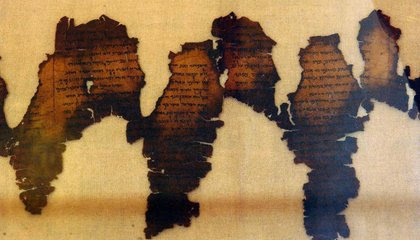華盛頓的Museum of the Bible之收藏死海經卷全假。以色列的才是真的。
The new findings raises questions about the authenticity of a collection of texts known as the “post-2002” scrolls
The new findings raises questions about the authenticity of a collection of texts known as the “post-2002” scrolls
:focal(1043x624:1044x625)/https://public-media.si-cdn.com/filer/1a/71/1a716609-c378-426c-99df-23efb2bd8f4c/gettyimages-2093152.jpg)
By Brigit Katz
SMITHSONIANMAG.COM
In 2009, Hobby Lobby president Steve Green began acquiring a collection of 16 Dead Sea Scrolls for his Museum of the Bible, a sprawling institution in Washington, D.C. that seeks to provide “an immersive and personalized experience with the Bible, and its ongoing impact on the world around us.”
The museum opened in 2017—and not long after, doubts began to swirl about the authenticity of its Dead Sea Scrolls. Five were confirmed to be fake. And now, reports Michael Greshko for National Geographic, a study commissioned by the museum has reached an even more damning conclusion: “[N]one of the textual fragments in the Museum of the Bible’s Dead Sea Scroll collection are authentic.”
A team of independent researchers compiled the report with funding from the museum. The investigation, unveiled at a recent academic conference, spanned six months and saw the contested scrolls undergo examination with a battery of advanced technologies, including 3-D microscopes, scanning electron microscopy and microchemical testing.
The report does not cast doubt upon the authenticity of the Dead Sea Scrolls held by the Israel Museum in Jerusalem. These artifacts are among the most precious relics of the ancient world, first discovered in 1947 in a cave at Qumran, near the shores of the Dead Sea. Dated to around 2,000 years ago, most of the scrolls were written in Hebrew, though some were penned in Aramaic and Greek.
 |
|
No comments:
Post a Comment